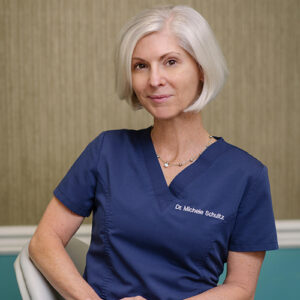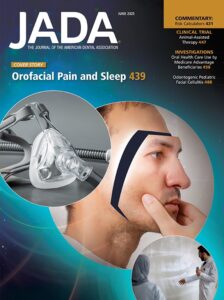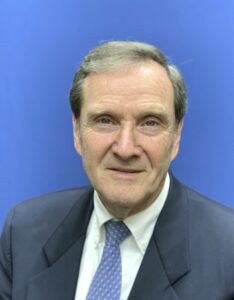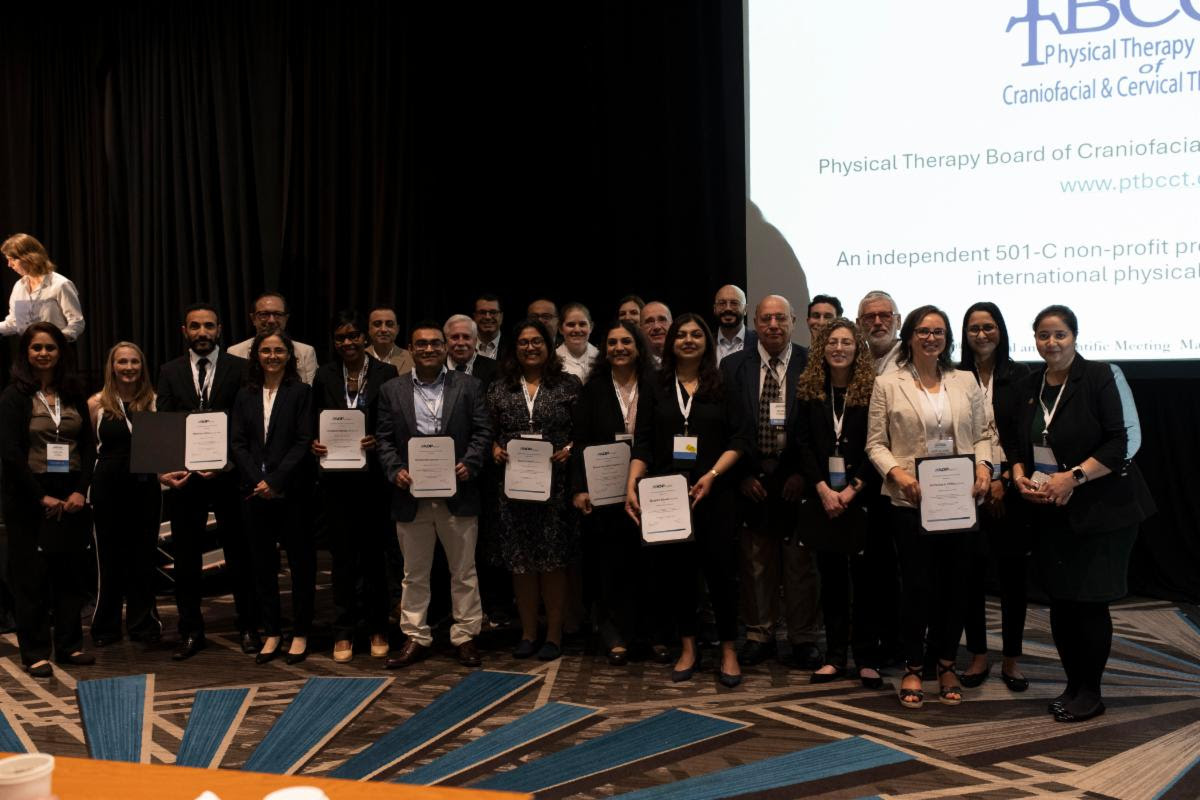August 2025 Newsletter
Letter from the President
Dear AAOP Members,
 As we embark on this next chapter in the Academy’s growth, your voice is more important than ever. We’ve made great strides together—securing specialty recognition, expanding educational resources, and strengthening our advocacy—but there is more to do.
As we embark on this next chapter in the Academy’s growth, your voice is more important than ever. We’ve made great strides together—securing specialty recognition, expanding educational resources, and strengthening our advocacy—but there is more to do.
To ensure our efforts reflect the needs and priorities of our members, we are launching the AAOP Member Engagement & Support Survey.
This brief survey will help guide our strategic direction, shape future initiatives, and identify new opportunities to serve both our community and the broader field of orofacial pain.
We are also calling on our members to get involved—whether by joining a committee, contributing your expertise, or supporting critical initiatives through a donation. From advancing clinical education and public awareness to strengthening state-level advocacy and research, your engagement fuels our momentum. I invite you to take a few minutes to complete the survey and let us know how you’d like to be a part of this next phase. Together, we can continue building a vibrant, visible, and impactful future for our specialty.
Michele Schultz-Robins DMD, FAAOP, DABOP

AAOP President
Member Spotlight
Dr. Anita Kabaria
 Dr. Anita Kabaria is the founder of Bergen TMJ & Dental Sleep Care, a boutique private practice in Bergen County, New Jersey, dedicated exclusively to Orofacial Pain and Dental Sleep Medicine. Grown organically through trusted referrals and community connections, her practice reflects a strong commitment to multidisciplinary care. She collaborates closely with physicians, dentists, physical therapists, and sleep specialists to provide comprehensive, patient-centered treatment.
Dr. Anita Kabaria is the founder of Bergen TMJ & Dental Sleep Care, a boutique private practice in Bergen County, New Jersey, dedicated exclusively to Orofacial Pain and Dental Sleep Medicine. Grown organically through trusted referrals and community connections, her practice reflects a strong commitment to multidisciplinary care. She collaborates closely with physicians, dentists, physical therapists, and sleep specialists to provide comprehensive, patient-centered treatment.
As a mother of two young children, Dr. Kabaria understands the importance of balance and brings that same empathy and dedication to both her family and her patients. She continues to grow her practice while staying actively engaged in advancing her clinical skills and expanding access to specialized care in her community.
Dr. Kabaria began her dental career in India, earning her BDS and completing a General Practice Residency in 2012 at Krishna School of Dental Sciences. After moving to the U.S., she pursued advanced training in Temporomandibular Disorders and Orofacial Pain at Rutgers School of Dental Medicine in 2017, earning both Diplomate and Fellow status in the field. She went on to receive her DDS degree from the University at Buffalo in 2020 and completed a General Practice Residency at the VA Medical Center in New Jersey.
Get to know Dr. Anita Kabaria in this brief Q&A, where she shares insights into her career, passions, and advice for future professionals.
1. How did you get interested in the field of Orofacial Pain?
My path to orofacial pain began with curiosity and gradually evolved into a lasting commitment. While working toward my dental licensure in the United States, I enrolled in an advanced education program in orofacial pain. At the time, it was a way to make productive use of my time and strengthen my credentials. Although I found the field intellectually engaging, I did not immediately see it as my long-term career path.
That perspective began to shift about two years into my associateship as a general dentist. As I treated patients struggling with TMJ disorders and chronic facial pain, I became increasingly aware of how underserved this population is and how critical the need for specialized care remains within the community.
What started as a passing interest five years ago has since grown into a deeply meaningful professional commitment. Today, it defines the foundation and mission of my private practice.
2. How do you feel that the field of Orofacial Pain has evolved over the years?
Over the past few years, I have witnessed remarkable growth in the field of orofacial pain from two key perspectives: a steady increase in referrals from medical professionals, and a noticeable rise in interest among dental students in pursuing this specialty.
Orofacial pain is increasingly recognized across the broader healthcare community. In the past, many physicians, ENTs, and neurologists were unaware that board-certified orofacial pain specialists even existed. Today, with a stronger understanding of the specialty and its collaborative, interdisciplinary approach, they feel confident referring patients directly. This has led to professional partnerships and significantly improved patient care.
For many years, TMJ and orofacial pain were viewed as niche areas, often lacking visibility and perceived as unsustainable in private practice. It was rare to hear dental students express interest in the field. That narrative is now shifting. With the development of well-structured residency programs and a clearer path to building a viable and rewarding career, more graduates are choosing to pursue advanced training. It is encouraging to witness this growing momentum.
3. What are the most challenging and rewarding aspects of caring for patients with chronic pain?
One of the most challenging aspects of this field is the limited number of trained providers, which often forces patients to travel long distances for care. Many have been in pain for months or even years, and by the time they reach us, they are understandably exhausted, frustrated, and desperate for answers. This creates a sense of urgency and emotional weight, not only from the patient’s perspective but also for providers striving to offer meaningful relief and positive outcomes. Balancing that urgency with the reality that managing chronic pain requires time, patience, and a multidisciplinary approach can be difficult.
One of the most rewarding aspects of this work is witnessing a patient’s transformation over the course of treatment. Chronic pain can deeply affect every aspect of life, so when patients begin to feel better, the change is often visible both physically and emotionally. Sometimes this shift can be seen in their eyes, and it is incredibly fulfilling.
Another meaningful part of this work is helping patients with what is often referred to as “mystery pain.” Identifying and treating conditions that mimic dental pain can provide long-awaited relief and prevent unnecessary procedures or medications. This process is often eye-opening even for other healthcare providers. Being able to preserve healthy structures while improving a patient’s well-being makes this field both impactful and immensely gratifying.
4. What advice do you have for members who are starting their career in the field of Orofacial Pain? Suggest some resources that were helpful to you.
Starting a career as an orofacial pain specialist requires thinking outside the box, especially compared to more traditional dental specialties. There is no one-size-fits-all path. While some clinicians may join established practices, others, depending on factors such as location, personal goals, and circumstances, may need to build their practice from the ground up because local job opportunities do not exist.
When I began exploring ways to transition from general dentistry into specialty care, I found no existing opportunities nearby and decided to open my own practice. Balancing this challenge while raising two young children was not easy, but it has been one of the most rewarding decisions I have made. Through collaboration with other healthcare providers and learning the complexities of running a business, this journey has been both demanding and deeply fulfilling. It has allowed me to create a practice that is not only professionally meaningful but also personally aligned with the care environment I value.
Two resources that were especially helpful in my early journey were enrolling in the mentorship program through AAOP and shadowing experienced providers. The mentorship offered valuable insights, support, and guidance as I navigated complex cases and career decisions. Shadowing allowed me to observe real-world clinical practice and deepen my understanding of patient care.
For anyone starting out in this field, I strongly encourage taking advantage of mentorship and networking opportunities. They can make a lasting difference as you shape your own path.
5. What do you like to do in your free time?
As a parent to two young daughters, my free time has taken on a whole new meaning. These days, it is less about my own interests and more about what captures their curiosity and imagination. This often leads us into creative adventures. Painting, arts, crafts, and hands-on projects have become regular parts of our routine. In many ways, it feels like a full-circle moment. The same love for working with my hands and creating something meaningful is what first drew me to dentistry. Now, I get to rediscover that joy every day through their eyes.
Research Committee
The AAOP Research Committee is dedicated to improving the research infrastructure of the AAOP. The committee is all volunteer-based and activities of the committee are entirely donor-funded. With the dynamic situation in research funding across the nation, we believe that the mission of the Research Committee of promoting high-quality orofacial pain researchers and empowering the next generation of research leaders in the field is more important than ever. The chair of the Research Committee is Dr. Ian Boggero, and the chair of the Fundraising Subcommittee is Dr. Beth Groenke. Returning members consist of (in alphabetical order by last name) Drs. Azadeh Ahmadieh, Prazwala Chirravur, Qiman Gao, Yoly Gonzales-Stucker, Amna Hasan, Ivonne Hernandez, Linda Sangalli, Rebecca Schaffer, Savitha Siddappa, Shilpa Singh, Ying Wu, and Fernanda Yanez Regonesi. Additionally, this year we welcomed two new members: Moreza Bahar and Delasi Denoo. The Council Liaison is Dr. Tom Weber.
Over the last year the committee has had three major accomplishments, and more progress is expected for the upcoming year! The first major accomplishment has been to continue developing and improving our fundraising platform. Headed by Fundraising Subcommittee chair Beth Groenke, in the last several years we have created a Zeffy platform to facilitate electronic donations, hosted raffles and silent auctions at our annual meetings, and hosted 5K races to raise research funds, among other activities.
This upcoming year we will continue to roll out new fundraising campaigns to try to meet our 50K by 50 year goal (raising $50,000 by our 50th anniversary meeting). Because the activities of the committee are entirely donor-funded, we sincerely appreciate any donation (https://www.zeffy.com/en-US/peer-to-peer/2024-help-us-find-new-ways-to-alleviate-pain-support-aaop-research).
The second goal of the year has been to continue hosting our annual AAOP Research Award. This award provides funds to orofacial pain researchers across the clinical spectrum (from basic science to clinical science), with priority given to applicants who need funds to generate preliminary or pilot data for larger, higher-impact grants. The application instructions and deadlines for this award will be posted online in August 2025, so stay tuned if you are interested in applying.
The third accomplishment of the last year has been to formalize processes for AAOP members who wish to obtain a formal letter of support from AAOP for their research projects, and to create a protocol for those who want to send research survey links to AAOP members.
Overall, the last year has been extremely productive, and we look forward to many more accomplishments in the year ahead!
How does dental sleep medicine fit into the specialty of orofacial pain? A narrative review
Isabel Moreno-Hay, Steven Bender, Aurelio Alonso, Larry Lockerman, Sherwin Arman, Mariona Mulet Pradera
JADA June 2025
 Background: Sleep disturbances can lead to an increase in pain and vice versa. Pain, including orofacial pain, can affect sleep quality, leading to poor health, and poor health can affect sleep quality. Conclusions and practical implications: Orofacial pain specialists have competency in the screening and management of sleep disorders commonly associated with orofacial pain as well as in sleep-related breathing disorders, as part of a multidisciplinary team of health care providers.
Background: Sleep disturbances can lead to an increase in pain and vice versa. Pain, including orofacial pain, can affect sleep quality, leading to poor health, and poor health can affect sleep quality. Conclusions and practical implications: Orofacial pain specialists have competency in the screening and management of sleep disorders commonly associated with orofacial pain as well as in sleep-related breathing disorders, as part of a multidisciplinary team of health care providers.
Read more: https://jada.ada.org/article/S0002-8177(25)00163-1/fulltext
Dr. Okeson’s 50th AAOP Anniversary message
 I had the privilege of being president of the AAOP from 1999-2000. In the year 2000 we held the 3rd International Congress for Orofacial Pain and Temporomandibular Disorders. At that time, the AAOP joined with our sister academies and had a joint meeting every 4th year. My presidency was the 3rd International Congress for Orofacial Pain and Temporomandibular Disorders in Seoul Korea. It was a great honor for me to represent the AAOP in the International meeting. The first joint international meeting was held in Chicago and the second was in Paris France. We are no longer doing this.
I had the privilege of being president of the AAOP from 1999-2000. In the year 2000 we held the 3rd International Congress for Orofacial Pain and Temporomandibular Disorders. At that time, the AAOP joined with our sister academies and had a joint meeting every 4th year. My presidency was the 3rd International Congress for Orofacial Pain and Temporomandibular Disorders in Seoul Korea. It was a great honor for me to represent the AAOP in the International meeting. The first joint international meeting was held in Chicago and the second was in Paris France. We are no longer doing this.
I also had the privilege to serve on the “White Paper Committee” in the late 1980s for the Academy when it was called the American Academy of Craniofacial Pain. This was our first attempt to create guidelines for the management of temporomandibular disorders. I also chaired the AAOP guidelines committee from 2003-2006. I was the editor of third edition of our guidelines that we expanded our guidelines from TMD to Orofacial Pain. This was accomplished by including many of the orofacial pain categories into the guidelines. It was a reflection the expansion of our Academy to Orofacial Pain Here is the reference:
Okeson JP (ed) Orofacial Pain: Assessment, Diagnosis and Management, Quintessence Publishers Inc., Chicago IL, 1996
It was also at that time that when we expanded our official name to the American Academy of Orofacial Pain. We have certainly evolved since that time.
Congratulations to New Fellows 2025
Younjung Park
Ali Daneshmand
Erkan Onurlu
Asher Mansdorf
Eric Frederiksen
Ji Woon Park
George J. Sheppard III
Katherine S. Philips
Lauren Levi
Magda R. AbdelFattah
Mina Maher Faiek
Deepika Jaiswal
Jessica A. Christy
Tamara Sardar Al-Karadaghi
Andres Cervantes
Asha Sude
Shilpa Singh
Eugene S Kulaga
Mahmoud Salem
Roberta R. Jurash
Soo- Jin Lee
Kamal Al Eryani
Chizobam Idahosa
Hani Hanna
Hillary Metcalf
Benjamin Kruman
Lige Frank Dunaway III
Mayank Shrivastava
Mona Amtullah Haleem
Saranya Varun
Reda Abdel-Haleem Abdel-Fattah
Haissam Dahan
Mohd Awwad

Related Meetings
2025 Scottsdale Headache Symposium
Start Date: 12/04/2025
End Date: 12/07/2025
Location: In-person Event – Westin Kierland Resort & Spa, Scottsdale, AZ
Registration: https://americanheadachesociety.org/events/2025-scottsdale-headache-symposium/registration
PAINWeek Annual Meeting
September 2-5, 2025
Location: Las Vegas
Registration: https://conference.painweek.org/#registration
Meeting EAOPD 2025
Date: Friday 29th and Saturday 30th, 2025
Location: Marriott Basel (Switzerland)
Address: Messeplatz 25, 4058 Basel, Switzerland
Registration: https://www.eaopd.org/subscribe
9th International Congress on Neuropathic Pain – NeuPSIG 2025
4 -6 September 2025
Location: Berlin, Germany
Registration: https://neupsigcongress.org/registration/











